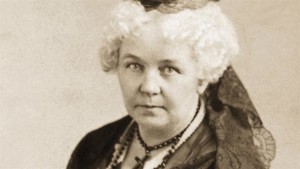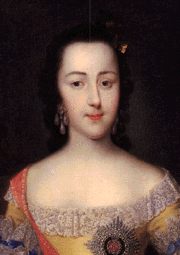Photo courtesy of www.biography.com
Elizabeth Cady Stanton was one of the great early leaders of the woman’s rights movement. She is known for writing the Declaration of Sentiments, which was a call to arms for female equality. Stanton was the president of the National Woman Suffrage Association for 20 years and worked closely with another great women’s rights activist, Susan B. Anthony. Her advocacy of liberal divorce laws and reproductive self-determination is what lead her to become of the most involved and celebrated suffragists. Elizabeth Cady Stanton’s efforts ultimately helped bring about the passage of the 19th Amendment, which gave all citizens the right to vote.
Elizabeth was born on November 12, 1815, in Johnstown, New York.She was the daughter of a lawyer who made it no secret that he had longed to have a son instead. Elizabeth showed her desire to excel in intellectual and other “male” spheres starting at a young age.
She graduated from the Emma Willard’s Troy Female Seminary in 1832 . Shortly after, she was then drawn to the abolitionist, temperance, and women’s rights movements during her many visits to the home of her cousin, who happened to be a reformer as well, Gerrit Smith. In 1840 Elizabeth married a reformer Henry Stanton, and quite fitting they even omitted “obey” from their marriage oath. The two newly weds then immediately left to join their fellow reformers at the World’s Anti-Slavery Convention. Though Elizabeth could not join her husband in the actually conference due to the exclusion of women there, instead she joined the other women there that were fighting for their right to be included in the convention.
Elizabeth is mostly known for her outstanding work in the Women’s Rights movement that all began with the famous Seneca Falls Convention that she held alongside women like Lucretia Mott . At this meeting, the attendees drew up its “Declaration of Sentiments” and she took the lead in proposing that women be granted the right to vote. After the convention, Elizabeth still continued to do speeches about the importance and need for Women’s Rights, inspiring others like Susan B. Anthony to join the cause. During the Civil War Elizabeth Cady Stanton took a short break from women’s suffrage and turned her efforts on abolishing slavery, but afterwards she became even more fired up when it came to promoting women suffrage.
In 1868, she worked with Susan B. Anthony on the Revolution, a militant weekly paper. The two then formed the National Woman Suffrage Association (NWSA) in 1869. Stanton was the NWSA’s first president , which she held until 1890.
Elizabeth Cady Stanton falls under the category of an outstanding women for many reasons. Women would not lead the same lives that they do now; they wouldn’t have the right to vote and ultimately become more equal to men. She is outstanding because she had a goal and dream to see women and men equal and for women to have a say in their own country. Her determination inspired many others to make a difference and still does today. I thank Elizabeth Cady Stanton for my right to vote and the inspiration to make a difference.

